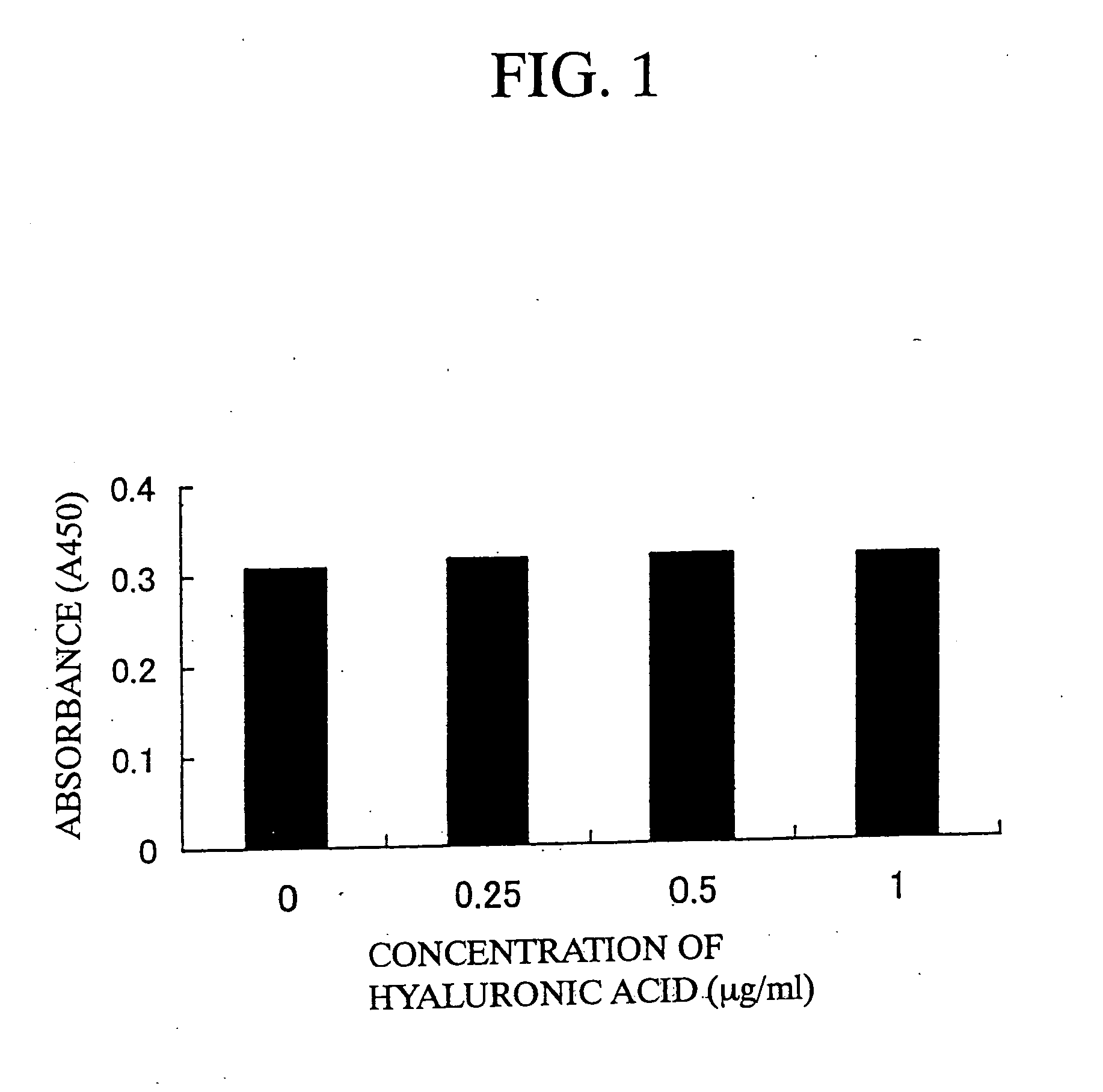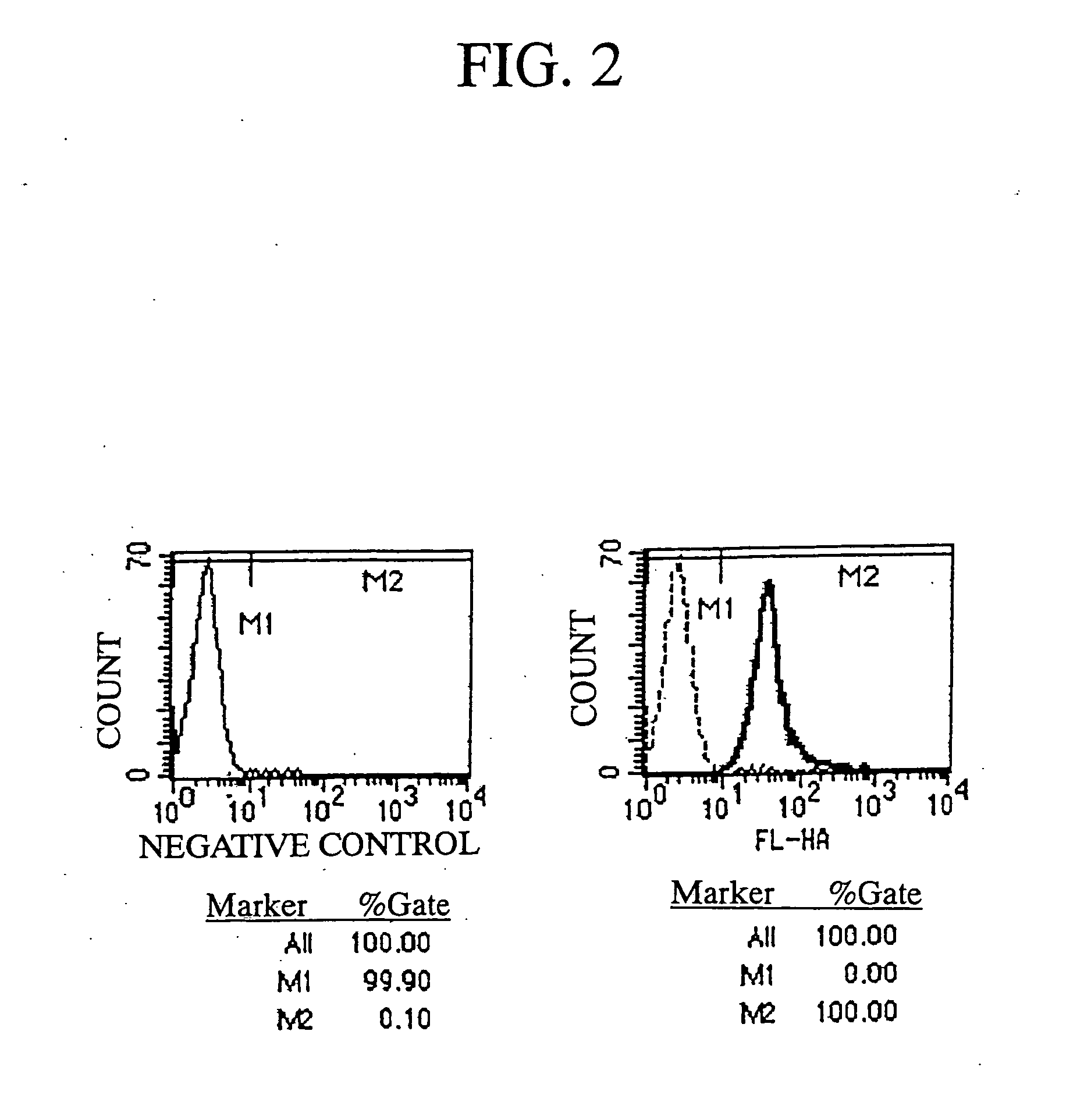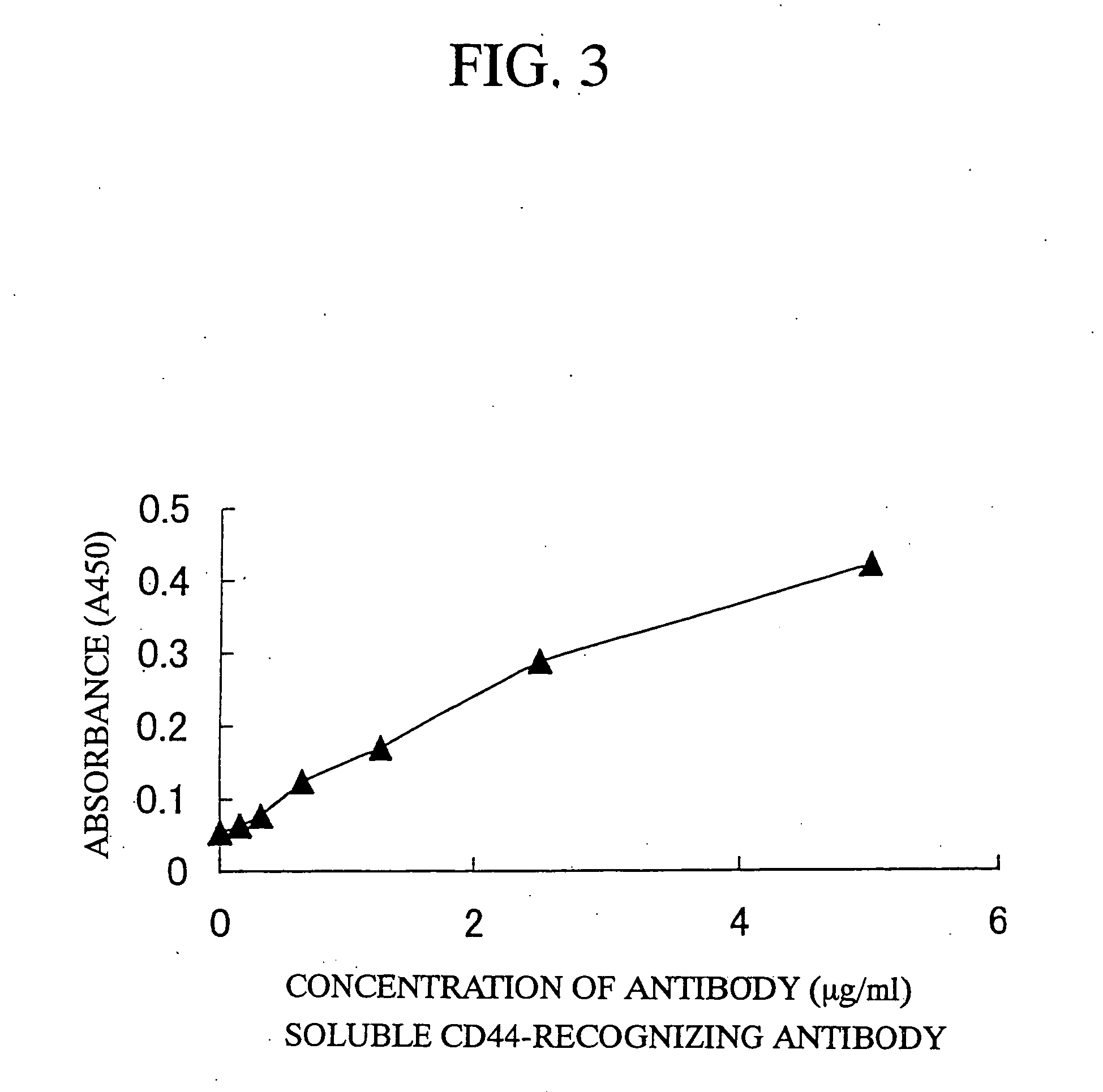Method of extended culture for antigen-specific cytotoxic lumphocytes
a cytotoxic lumphocyte and culture method technology, applied in the field of extended culture of antigen-specific cytotoxic lumphocytes, can solve the problems of inability to proliferate t cells to 10sup>9 /sup>to 10 and eventually decrease the cell number
- Summary
- Abstract
- Description
- Claims
- Application Information
AI Technical Summary
Benefits of technology
Problems solved by technology
Method used
Image
Examples
example 1
Method of Expanding CTLs Having Specific Cytotoxic Activity Using Hyaluronic Acid
example 1-1
[0143] (1) Isolation and Storage of PBMCs
[0144] Blood component was collected from a human normal individual donor having HLA-A2.1. The collected blood component was diluted 2-folds with PBS(−), overlaid on Ficoll-paque (manufactured by Pharmacia), and centrifuged at 500×g for 20 minutes. After the centrifugation, the peripheral blood mononuclear cells (PBMCs) in the intermediate layer were collected with a pipette, and washed. The collected PBMCs were suspended in a storage solution of 90% FBS (manufactured by Bio Whittaker) / 10% DMSO (manufactured by SIGMA), and stored in liquid nitrogen. During CTL induction, these stored PBMCs were rapidly melted in water bath at 37° C., and washed with RPMI 1640 medium (manufactured by Bio Whittaker) containing 10 μg / ml Dnase (manufactured by Calbiochem). Thereafter, the number of living cells was calculated by trypan blue staining method, and the cells were subjected to each experiment.
[0145] (2) Induction of Anti-Influenza Virus Memory CTLs ...
example 1-2
[0154] (1) Induction of Anti-Influenza Virus Memory CTLs
[0155] The induction of anti-influenza virus memory CTLs was carried out in the same manner as in item (2) of Example 1-1 using the PBMCs which were isolated and stored in the same manner as in item (1) of Example 1-1. During the induction, hyaluronic acid was added to a medium so as to have a final concentration of 10 μg / ml. Further, the group without addition of the sample was set.
[0156] The cytotoxic activity of CTLs prepared as described above on the fourteenth day after the initiation of induction was evaluated in the same manner as in item (3) of Example 1-1. As a result, the specific cytotoxic activity was induced immediately after the induction, but there were hardly any differences in the cytotoxic activity by the presence or absence of the addition of the antibody during the induction.
[0157] (2) Expansion of CTLs
[0158] CTLs prepared in item (1) of Example 1-2 were expanded in the same manner as in item (4) of Exam...
PUM
| Property | Measurement | Unit |
|---|---|---|
| volume | aaaaa | aaaaa |
| concentration | aaaaa | aaaaa |
| concentration | aaaaa | aaaaa |
Abstract
Description
Claims
Application Information
 Login to View More
Login to View More - R&D
- Intellectual Property
- Life Sciences
- Materials
- Tech Scout
- Unparalleled Data Quality
- Higher Quality Content
- 60% Fewer Hallucinations
Browse by: Latest US Patents, China's latest patents, Technical Efficacy Thesaurus, Application Domain, Technology Topic, Popular Technical Reports.
© 2025 PatSnap. All rights reserved.Legal|Privacy policy|Modern Slavery Act Transparency Statement|Sitemap|About US| Contact US: help@patsnap.com



